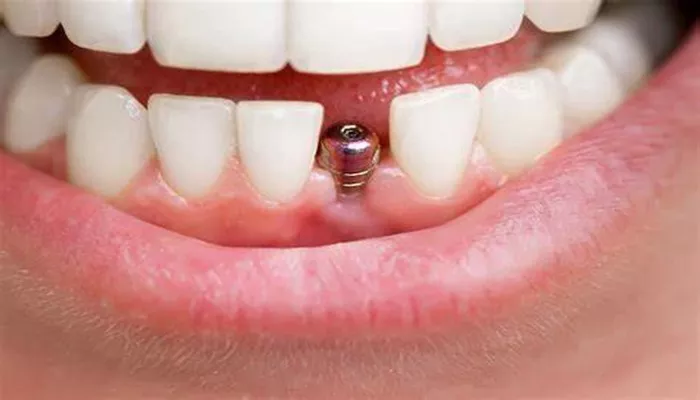Dental implant surgery is a common and effective solution for replacing missing teeth. With advancements in technology and techniques, the success rates for implants have significantly increased. However, to achieve the best outcomes, specific guidelines must be followed. This article will explore the essential dental implant surgery guidelines, providing a comprehensive overview of the process, considerations, and best practices.
Introduction
Dental implants are artificial tooth roots that are surgically placed into the jawbone to support replacement teeth. They offer a durable and natural-looking solution for those who have lost teeth due to injury, decay, or periodontal disease. While the procedure can be highly successful, it requires careful planning and execution. The guidelines for dental implant surgery are designed to ensure patient safety, enhance healing, and maximize the chances of long-term success. This article will delve into these guidelines, providing valuable information for both patients and dental professionals.
Pre-Surgical Guidelines
Before any surgical procedure, proper planning is crucial. The following guidelines are essential during the pre-surgical phase:
1. Comprehensive Assessment
Medical History Review: A thorough review of the patient’s medical history is vital. Conditions such as diabetes, heart disease, or autoimmune disorders can affect healing and implant success.
Dental Examination: A complete dental examination, including X-rays or 3D imaging, helps assess the condition of the jawbone and surrounding teeth. This imaging is crucial for determining the ideal placement of the implant.
2. Treatment Planning
Customized Treatment Plan: Each patient’s situation is unique. A tailored treatment plan should be developed, outlining the type of implants, number of implants required, and the timeline for the procedure.
Selection of Implant Type: Depending on the patient’s needs, different types of implants may be chosen, such as endosteal (placed in the jawbone) or subperiosteal (placed under the gum but above the jawbone).
3. Evaluation of Bone Density
Bone Grafting: If the patient does not have enough bone density to support an implant, a bone graft may be necessary. This can involve using the patient’s bone, synthetic bone, or donor bone.
Implant Size and Type: The width and length of the implant must be selected based on the available bone. Proper measurements ensure stability and longevity.
Surgical Guidelines
The surgery itself must adhere to strict guidelines to promote safety and effectiveness. Here are the key surgical guidelines:
4. Sterile Environment
Infection Control: A sterile environment is essential to minimize the risk of infection. This includes using sterile instruments, drapes, and surgical attire.
Antibiotics: Prophylactic antibiotics may be administered before the procedure to reduce the risk of infection.
5. Anesthesia Protocol
Type of Anesthesia: Depending on the complexity of the procedure and the patient’s comfort, local anesthesia, sedation, or general anesthesia may be used.
Monitoring: Continuous monitoring of the patient’s vital signs is necessary throughout the procedure to ensure safety.
6. Surgical Technique
Incision and Flap Management: The surgical site requires careful incision and management of soft tissue flaps to access the bone.
Bone Preparation: Drilling into the bone must be done with precision, using the correct size and type of drills to create a site for the implant.
7. Implant Placement
Correct Positioning: The implant must be placed at the correct angle and depth to ensure stability and proper alignment with the adjacent teeth.
Torque Specifications: The implant should be placed with the appropriate torque to ensure it is secure but not overly tight, which can lead to bone damage.
8. Post-Operative Care
Immediate Aftercare: Post-surgery instructions should be given to the patient, including pain management and signs of complications to watch for.
Follow-Up Appointments: Regular follow-up visits are crucial for monitoring healing and implant integration into the bone.
Post-Surgical Guidelines
The post-operative phase is equally important for the success of the implant. The following guidelines should be observed:
9. Healing Time
Osseointegration: The process of osseointegration, where the implant fuses with the bone, typically takes several weeks to months. During this time, the patient must follow care instructions closely.
Limitations on Activities: Patients should avoid strenuous activities and follow dietary recommendations to minimize stress on the implant site.
10. Oral Hygiene
Maintaining Oral Hygiene: Proper oral hygiene is critical after surgery. Patients should be advised on how to clean the implant site gently to prevent infection.
Regular Dental Cleanings: Ongoing dental care, including professional cleanings, helps maintain the health of both the implant and surrounding teeth.
Long-Term Maintenance Guidelines
Long-term success of dental implants also relies on following specific maintenance guidelines:
11. Routine Check-Ups
Regular Dental Visits: Patients should schedule routine check-ups to monitor the condition of the implant and surrounding tissues. These visits allow for early detection of any potential issues.
X-rays: Periodic X-rays can help assess the bone level around the implant and ensure its stability.
12. Lifestyle Modifications
Quit Smoking: Smoking significantly affects healing and can increase the risk of implant failure. Patients should be encouraged to quit smoking or at least reduce their intake.
Healthy Diet: A balanced diet rich in vitamins and minerals supports overall health and promotes healing.
13. Managing Complications
Signs of Failure: Patients should be educated on the signs of potential implant failure, such as pain, swelling, or loosening of the implant.
Prompt Attention: If any complications arise, prompt dental attention is crucial to address the issue before it worsens.
Conclusion
Dental implant surgery is a highly effective method for replacing missing teeth, but success depends on adhering to specific guidelines. From pre-surgical assessments to long-term maintenance, each step plays a vital role in ensuring the health and longevity of dental implants. By following these guidelines, both dental professionals and patients can work together to achieve the best possible outcomes.
Related topics:

